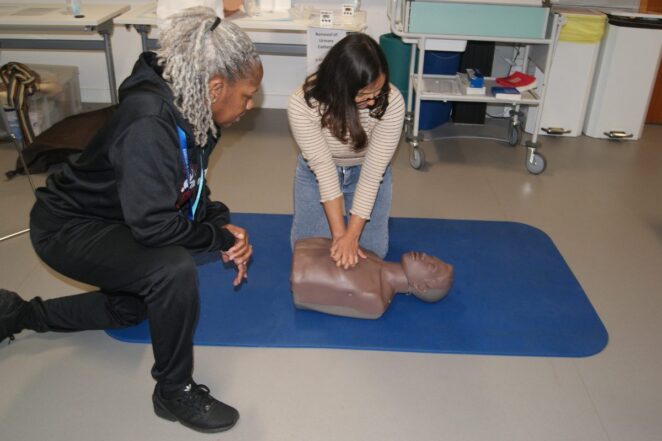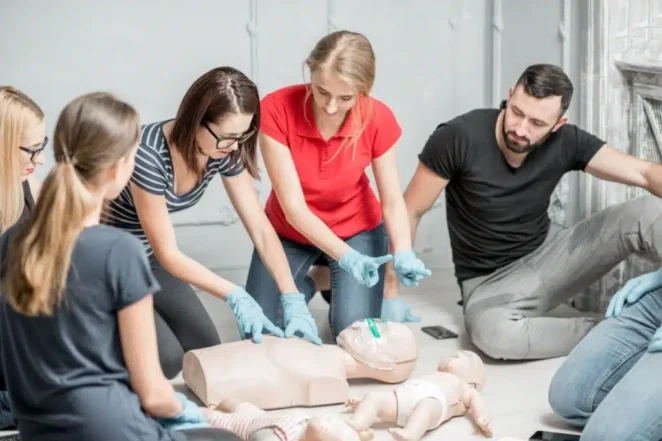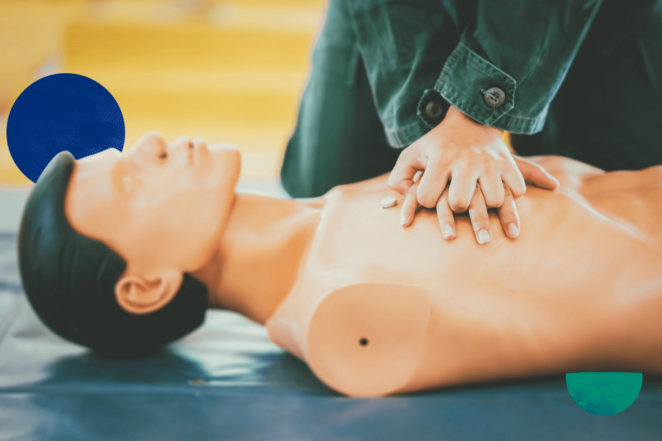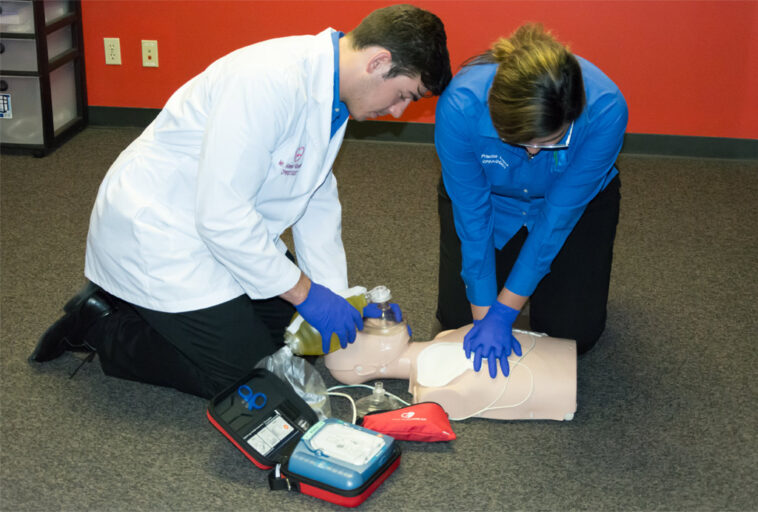In today’s fast-paced world, ensuring the safety and well-being of our communities has become more critical than ever. Emergencies can arise at any moment, and the difference between life and death often hinges on the prompt and effective actions of bystanders. Cardiopulmonary resuscitation (CPR) and first aid are vital skills that play a crucial role in building safer communities. These life-saving techniques empower individuals to respond effectively to emergencies, providing immediate care until professional medical help arrives. This article explores the importance of CPR and first aid, their impact on community safety, and the benefits of widespread training in these essential skills.
Understanding the Basics of CPR and First Aid
CPR, or cardiopulmonary resuscitation, is a life-saving technique used in emergencies where someone’s breathing or heartbeat has stopped. This could be due to various reasons, such as sudden cardiac arrest, drowning, or choking. CPR involves chest compressions combined with rescue breaths to maintain blood flow and oxygenation to vital organs, particularly the brain and heart, until advanced medical care can be provided. The primary goal of CPR is to sustain life and prevent brain damage by ensuring that oxygenated blood continues to circulate.
First aid, on the other hand, encompasses a broader range of emergency interventions. It involves the immediate care given to an individual who has sustained an injury or is experiencing a sudden illness. First aid measures can include treating cuts and burns, managing fractures, addressing shock, performing the Heimlich maneuver for choking, and even providing basic wound care. Like CPR, first aid aims to stabilize the victim’s condition, alleviate pain, and prevent further injury or complications.
The Importance of CPR and First Aid in Community Safety

The ability to perform CPR and administer first aid is not limited to healthcare professionals; it is a skill set that every community member should possess. These emergency interventions are often the first line of defense in a critical situation. With each passing minute following cardiac arrest, the chances of survival decrease by approximately 10%. Quick, effective CPR can significantly improve survival rates, underscoring the importance of having trained individuals readily available in every community setting.
First aid training is equally vital. Injuries and medical emergencies can happen anywhere—at home, work, school, or in public places. Immediate first aid care can prevent minor injuries from becoming major ones and provide relief in critical situations. For example, properly managing a bleeding wound can prevent excessive blood loss, and knowing how to handle a burn can reduce the severity of skin damage. Furthermore, first aid training often includes recognizing the signs of a stroke or heart attack, which allows bystanders to take swift action and seek medical help promptly.
Empowering Individuals Through Training
Widespread training in CPR and first aid can transform community members into proactive and confident responders. The knowledge and skills gained from training provide individuals with the competence to act during emergencies, reducing panic and improving outcomes. Organizations such as MyCPR NOW offer comprehensive training programs that equip participants with the necessary skills to perform CPR and administer first aid effectively.
These training programs are designed to be accessible and straightforward, making it easy for anyone, regardless of age or background, to learn. By incorporating realistic scenarios and hands-on practice, participants gain practical experience that enhances their confidence in handling real-life emergencies. As more people become trained, communities develop a network of capable first responders, creating a safer environment for everyone.
The Ripple Effect: Benefits Beyond Emergency Response
The impact of CPR and first aid training extends beyond immediate emergency response. Trained individuals often become advocates for health and safety in their communities. They encourage others to get trained, raising awareness about the importance of preparedness. This ripple effect can lead to more widespread adoption of safety measures and a culture of vigilance, ultimately reducing the occurrence of preventable accidents and emergencies.
CPR and First Aid in Schools and Workplaces

Implementing CPR and first aid training in schools and workplaces is a critical step towards building safer communities. Schools, in particular, are environments where children are prone to injuries, and the presence of trained staff can ensure that emergencies are handled swiftly and effectively. Moreover, teaching CPR and first aid to students not only equips them with life-saving skills but also instills a sense of responsibility and care for others. This early exposure can have a lasting impact, creating a generation of safety-conscious individuals.
In workplaces, CPR and first aid training contribute to a safer work environment. Employers who invest in such training demonstrate a commitment to the well-being of their employees. Trained staff can manage injuries and medical emergencies on-site, reducing downtime and potential legal liabilities. In industries with higher risks, such as construction or manufacturing, having trained personnel is particularly crucial to maintaining safety standards and minimizing workplace accidents.
The Role of Technology in Enhancing CPR and First Aid Training
Advancements in technology have made CPR and first aid training more accessible and effective. Online training platforms, provide flexible learning options, allowing individuals to complete courses at their own pace and convenience. Interactive modules, videos, and virtual simulations enhance the learning experience, ensuring that participants fully understand and retain the information.
Moreover, the integration of mobile applications and wearable devices can aid in emergency response. Some apps offer step-by-step guidance on performing CPR and first aid, making it easier for individuals to recall the correct procedures during high-stress situations. Wearable devices that monitor vital signs can provide real-time feedback during CPR, ensuring that chest compressions are performed correctly and effectively.
Creating a Culture of Preparedness
Building a safer community goes beyond individual training; it involves creating a culture of preparedness. Communities should regularly organize workshops, seminars, and public awareness campaigns to promote the importance of CPR and first aid. Collaborations between local authorities, schools, businesses, and healthcare organizations can amplify these efforts, reaching a broader audience and fostering a collective commitment to safety.
Emergency drills and simulations can also play a significant role in reinforcing training and preparedness. By practicing response scenarios, individuals become more familiar with emergency protocols, reducing response times and improving coordination during real incidents. These activities help build a resilient community that can withstand emergencies and recover swiftly.
Conclusion: The Power of Preparedness

As more people become trained in CPR and first aid, the collective ability to save lives and prevent injuries improves, creating a ripple effect of safety and awareness. By investing in these life-saving skills, we not only protect our loved ones but also contribute to the strength and resilience of our communities. In a world where emergencies can happen at any moment, preparedness is not just a precaution—it is a powerful tool for ensuring a safer and more secure future for all.



